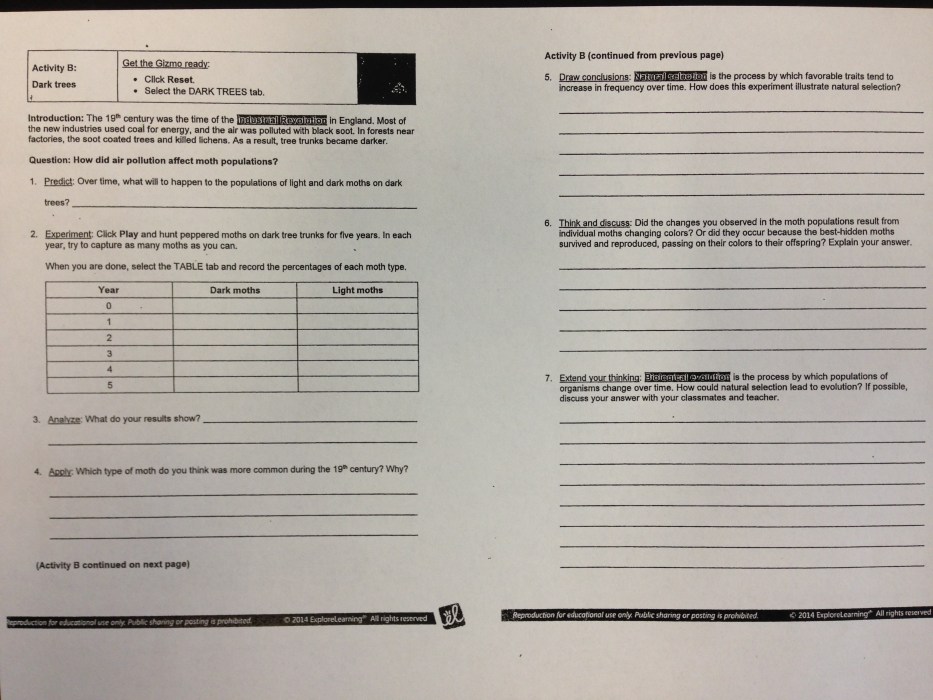Evolution natural and artificial selection gizmo answers uncovers the fundamental principles that govern the diversity of life on Earth. Embark on a journey to unravel the mechanisms that drive the adaptation of organisms to their ever-changing environments, from the grandeur of natural selection to the transformative power of human intervention.
Natural selection, the driving force behind evolution, operates through the relentless pressure of environmental constraints and the subtle variations in genetic makeup. This interplay shapes the trajectory of species, leading to remarkable adaptations that enhance survival and reproductive success. Artificial selection, on the other hand, harnesses human ingenuity to mold the genetic makeup of organisms, resulting in domesticated plants and animals tailored to specific human needs.
Evolution
Evolution is the process by which organisms adapt to their environment over time. It is a fundamental concept in biology that explains the diversity of life on Earth.
Evolution is driven by several mechanisms, including natural selection and genetic drift. Natural selection is the process by which organisms with traits that are better suited to their environment are more likely to survive and reproduce, passing on their traits to their offspring.
Genetic drift is the random change in the frequency of alleles in a population over time.
Evolution has shaped the diversity of life on Earth over millions of years. For example, the evolution of antibiotic resistance in bacteria is a well-known example of how organisms can adapt to environmental changes.
Natural Selection: Evolution Natural And Artificial Selection Gizmo Answers

Natural selection is the process by which organisms with traits that are better suited to their environment are more likely to survive and reproduce, passing on their traits to their offspring.
Natural selection is driven by three main factors: environmental pressures, genetic variation, and differential reproduction.
- Environmental pressuresare the challenges that organisms face in their environment, such as predators, competition for resources, and climate change.
- Genetic variationis the differences in genes between individuals in a population.
- Differential reproductionis the fact that some individuals in a population are more likely to survive and reproduce than others.
Natural selection has led to the adaptation of organisms to their environments. For example, the evolution of camouflage in animals is a well-known example of how organisms can adapt to avoid predators.
Artificial Selection
Artificial selection is the process by which humans breed organisms for specific traits. It is a form of selective breeding that has been used for centuries to create new breeds of plants and animals.
Artificial selection is different from natural selection in that it is driven by human intervention. Humans select which organisms to breed based on their desired traits, rather than relying on environmental pressures to drive the selection process.
Artificial selection has been used to create a wide variety of new breeds of plants and animals, including dogs, cats, horses, and crops.
Query Resolution
What is the primary mechanism driving natural selection?
Differential survival and reproduction based on advantageous traits.
How does artificial selection differ from natural selection?
Artificial selection involves human intervention to select desirable traits, while natural selection occurs solely through environmental pressures.
Provide an example of how artificial selection has been used to create a new breed of animal.
The domestication of dogs from wolves through selective breeding for desired characteristics.